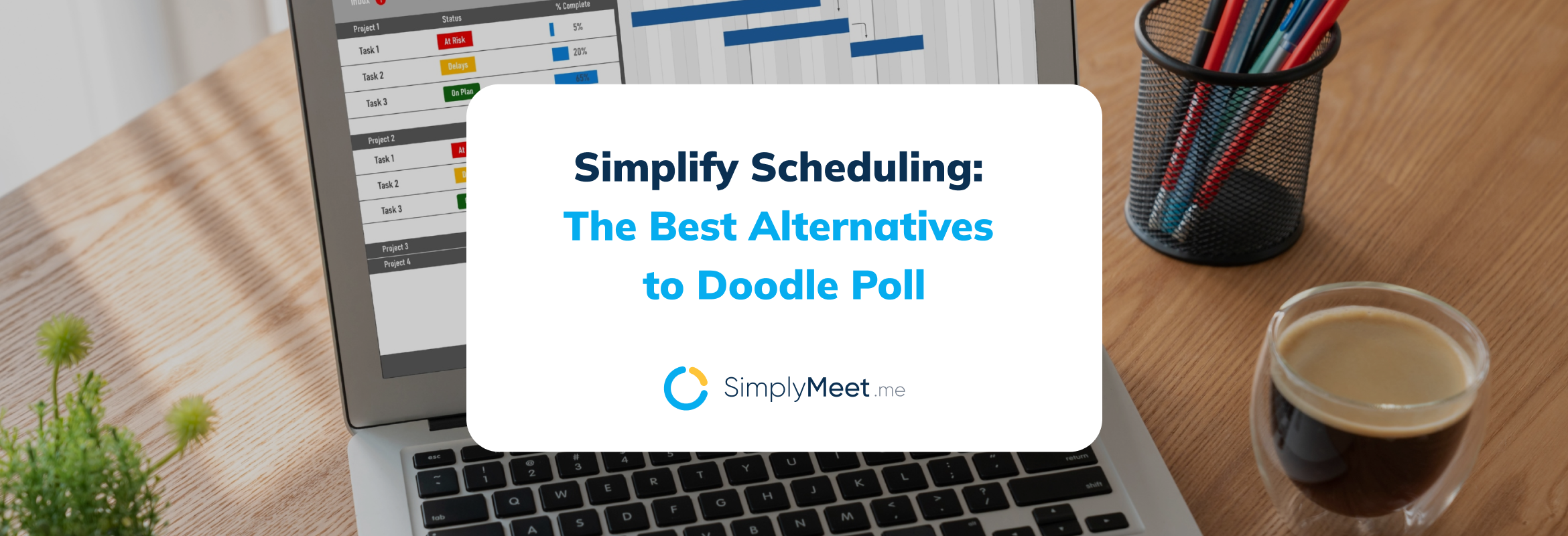Booking Sales Meetings with Potential Clients – and ensuring they show up

Sales take a particular type of person to understand how to nail down a new client. However, some steps can help you improve booking sales meetings that are crucial to securing deals.
You can’t let your sales skills secure the deal if you can’t get the potential client to book a meeting with you.
When you work in sales, you know there are two types of clients. The terminology changes with the company ethos, cold and warm(hot), incoming and outgoing. However, it always comes down to two things, whether you are seeking them or they are seeking you. For the sake of this article, I will stick to ‘hot’ and ‘cold’ to define whether clients are contacting you or you are reaching out to them.
- Hot = They have heard about you and want to talk to you about the product or service they need.
- Cold = Unsolicited contact with a person or company you think will be an excellent prospect to work with your business.
You already know this, but cold contact is always the most challenging deal to secure. The hot prospects are already interested in what you have to offer, and all you need to do is cement the deal with more facts to help them choose you over anyone else. With cold contacts, you have to create interest and define your product in terms of the client’s needs before they even consider you worth their time.
Email is Perfect for Cold Outreach
Cold outreach to potential new clients has switched from phone to email marketing. While a phone call can be immediate in its action, it also has the most chance of failing. People are much savvier about incoming calls; depending on the region and survey, between 87% and 94% of people will not answer calls from unrecognised numbers.
That’s a lot of wasted time sitting at the end of a ringing phone and not completing any sales. Even worse, your phone number is added to a spam list if people complain about incoming calls. That could be disastrous to your business.
Phone calls still have a place in the sales calendar and can have a massive impact, but they are unsuitable for cold outreach.
Email is far less invasive, cheaper than phone calls, and unlike a phone call, potential clients can’t make their eyes “unsee” an excellent opening email. It’s also easier to track the activity on an email campaign. A potential client can return to an email several times if it catches their interest, without any obligation or harassment.
Steps to Booking More Sales Meetings
Initial Approach
Before you even send your initial cold email, you should do some research. That means getting to know who you are approaching and the company or business you want on your books.
Make time for research and discovery.
You can send generic emails to a long list of potential clients, but that is a surefire way to slip under the radar. Moreover, when you send a large number of identical emails, you can easily get flagged as spam and disappear into the bottomless junk folder. You don’t want that.
A little research will help your emails find their mark better than any other email campaign. LinkedIn is ideal for locating important information about the people and companies you are approaching. While it’s time spent not selling, it is time well spent if it can help you secure more business.
Even if you aren’t approaching businesses, with a list of leads to follow, you can still do some social media research on the people you want to engage.
With some extra information, you can personalise your initial approach with what appears to be a custom-written message for the intended person. You don’t need to go too far, but a little tweak to a standard template could help you get past the first hurdle – getting someone to pay attention to your email.
Lead with a conversation
Your initial approach should be about the lead. Sure, you mention who you are and the business you represent, but you should initiate a dialogue with questions and create interest and curiosity in your product or service. That initial email should be about engaging the client’s interest, and qualifying the lead as a good fit.
Ensure you sound confident. Don’t let faux politeness lead you into the realms of uncertainty. Uncertainty, like confidence, can be infectious, and you don’t want to infect your prospect with your own doubts. Avoid the following phrases because they make you sound uncertain and as if you are asking a favour:
- “I’m sure you’re very busy.”
- We are all busy, but that doesn’t mean you have to make their time sound more important than yours.
- “I would be extremely grateful for just five minutes of your time.”
- You want to sell them your services and pay for your expertise, so why would they grant you a favour?
- If you can nail a sale in five minutes, you should not be begging for their time. Don’t be too confident or too demanding. 15-20 minutes should be long enough for your initial discovery pitch but not too long that the prospect dismisses it out of hand.
- “My schedule is wide open. What works for you?”
- If your schedule is that open, you clearly don’t have people vying for your time and skills.
- “Thanks so much for your time.”
- They haven’t given you any time yet,
Track your prospect activity
Once you have sent your initial emails, ensure you track them through an email marketing campaign manager. This way, you can qualify your leads through the activity they generate.
- Undelivered = They probably gave a fake address.
- Unopened = Ended up in the spam folder, or they just ignored it
- Opened = They didn’t ignore the subject line, so something was interesting to them
- Links clicked = This grabbed their attention
- Visited website = They started researching you to see if you are a good fit. Don’t let this one wriggle off the hook.
- Multiple openings = Serious consideration. They might even come straight to your inbound (warm) sales department.
The first two, undelivered/unopened, are not likely to generate a sale. However, keeping the unopened email addresses as potentials for a second or even third email to follow up is worthwhile.
Everyone else is worth the extra time to do further research and follow up with second and third attempts.
Some people go as far as ten, but I think five is a good number for follow-ups. It keeps the idea in mind but doesn’t get you reported as spam.
Get Creative for More Sales Meetings Bookings
Don’t be afraid to engage in some creativity when trying to secure bookings for sales meetings. Especially regarding prospects who have opened your email, clicked on links, and visited your website. They are worth spending a little bit extra on your approach.
Some creative ideas that have gained businesses a significant increase in securing business:
- Couriered messages
- If your emails aren’t getting you the response you want, it might be that you aren’t getting through to the right [person, or that person has a gatekeeper (assistant secretary etc.). A couriered letter with a single-page pitch is enough to make people sit up and take notice. Most decision-makers will know that you wouldn’t have spent this money if they didn’t believe you are a good fit, making them take you seriously.
- Video Messages
- It can be fun, quirky, formal and professional, but keep it short. Most video messages as attachments won’t be lost in the spam folder (unless the spam filter is extremely tight)
- It’s unusual, so people pay attention.
- Funny & Targeted Gifts
- What does your business present to them? What are you selling?
- An example
“I’m now brokering deals for a pet sitting platform with companies in the travel industry. The goal is for airlines, hotels, and booking sites to send out an offer for a free night of pet sitting after a booking.
I first started with cold email. But it’s what I did after that worked the best.
Since I could track who opened my initial email and how many times they opened it, I sent funny dog related items through Prime.
The CEO of a major airline opened my email 30 times so I sent him a 35 pound bag of dog food through Amazon Prime. It cost me $21. Within 4 days I had a call scheduled with their CMO.
The head of partnerships at Airbnb opened my email over 25 times so I sent her a dog house and then a 5 foot tall plush dog through Prime. A week later I had a call with their head of business development.
In two months I’ve had calls with 13 of the 15 biggest companies in the travel space and have deals in the works with two of them.”
u/thesonofnarcs/ , Reddit r/sales
It pays to use some outrageous tactics if your prospect is promising.
Keep the Momentum Going
Don’t let the momentum break now. You are so close to booking that sales meeting!
Secure a Sales Meeting Booking
There are two ways to secure a meeting. The first one is to ask for it. You know the saying. “If you don’t ask, you don’t get.” You might even just put the idea of a meeting in their heads and then talk about what it would entail.
However, the second method is to get them to ask for a meeting. This method takes a little longer but seems to improve the chances of a successful sale. If they ask for the meeting, they have probably already (almost) made up their minds.
Use Meeting Booking Software
Meeting scheduling software is almost invaluable when setting important sales meetings. You can use it internally to ensure you have the meeting space, conference equipment and perhaps even a demo ready for the sales meeting. Alternatively, you can utilise it to let clients book their preferred time, location, and meeting method (on-site or virtual).
There is some debate about the efficacy of sending meeting scheduling links in sales emails because it cuts out some of the ability to connect with the prospect on a personal level. However, that doesn’t mean you can’t make it an option while in contact with them. Include the meeting booking link on your email contacts the same as you could for email and phone. That way, they have the extra contact option.
Follow up Before Your Meeting
Don’t let them forget about you when you have secured a meeting time. Equally important, don’t book the meeting too far ahead. That leaves time for someone else to approach them or find a better deal.
Once you have secured the meeting, follow it with a confirmation. Please don’t be tempted to send a generic booking confirmation direct from a meeting scheduler. Ensure the client can add the appointment to their schedule and include specifics of why the meeting was booked and the agenda. Keep it brief but precise – ensure they know precisely why they are interested in your service or product.
And now to ensure they show up.
Standard practice with meeting schedulers is to send a reminder approximately 1-3 days before the meeting. Others might send the reminder an hour before the meeting. Your reminder notification should allow the client enough time to reschedule if necessary and also be reminded of the content of the meeting.
Some people choose to send multiple email reminders in the days before the meeting, but if you have secured the sales meeting soon, you shouldn’t need to do that.
Nail Your Sales Pitch!
You have them where you want them. They have agreed to a sales meeting, and you are ready to engage their business.
Now go back to the beginning and research everything you can about this client and the person with whom you will be meeting. Use all the weapons in your arsenal to secure the deal and complete the sale.
Good Luck! and Get selling!



Comments
1 commentsizmir evden eve asansörlü
it’s awesome article. I look forward to the continuation.